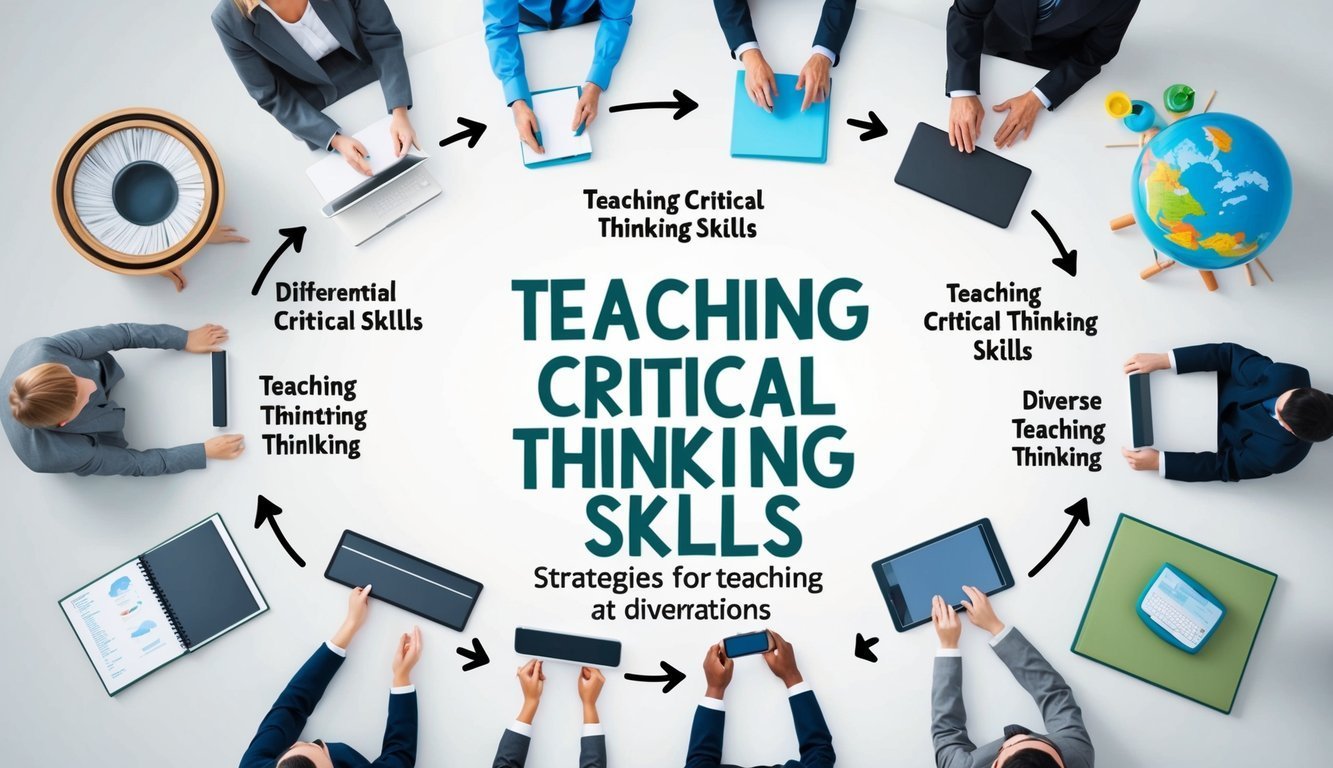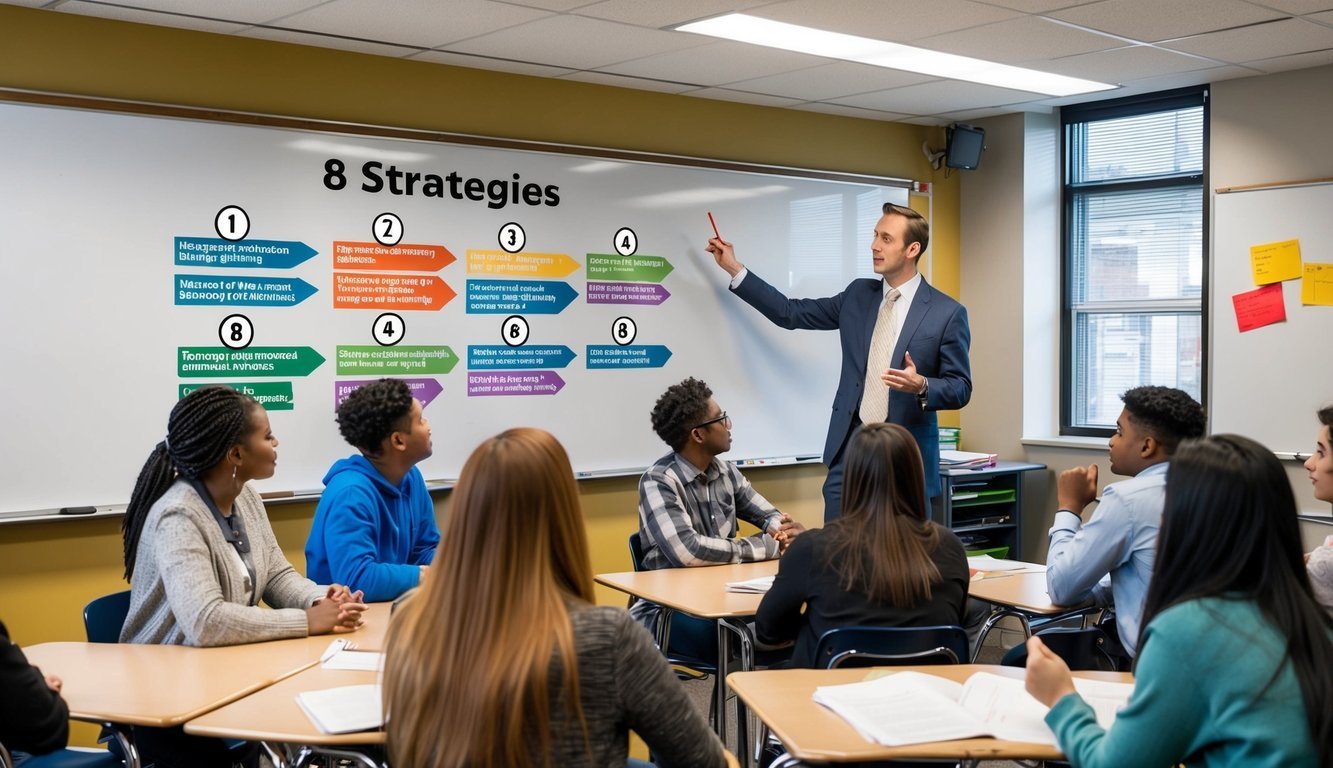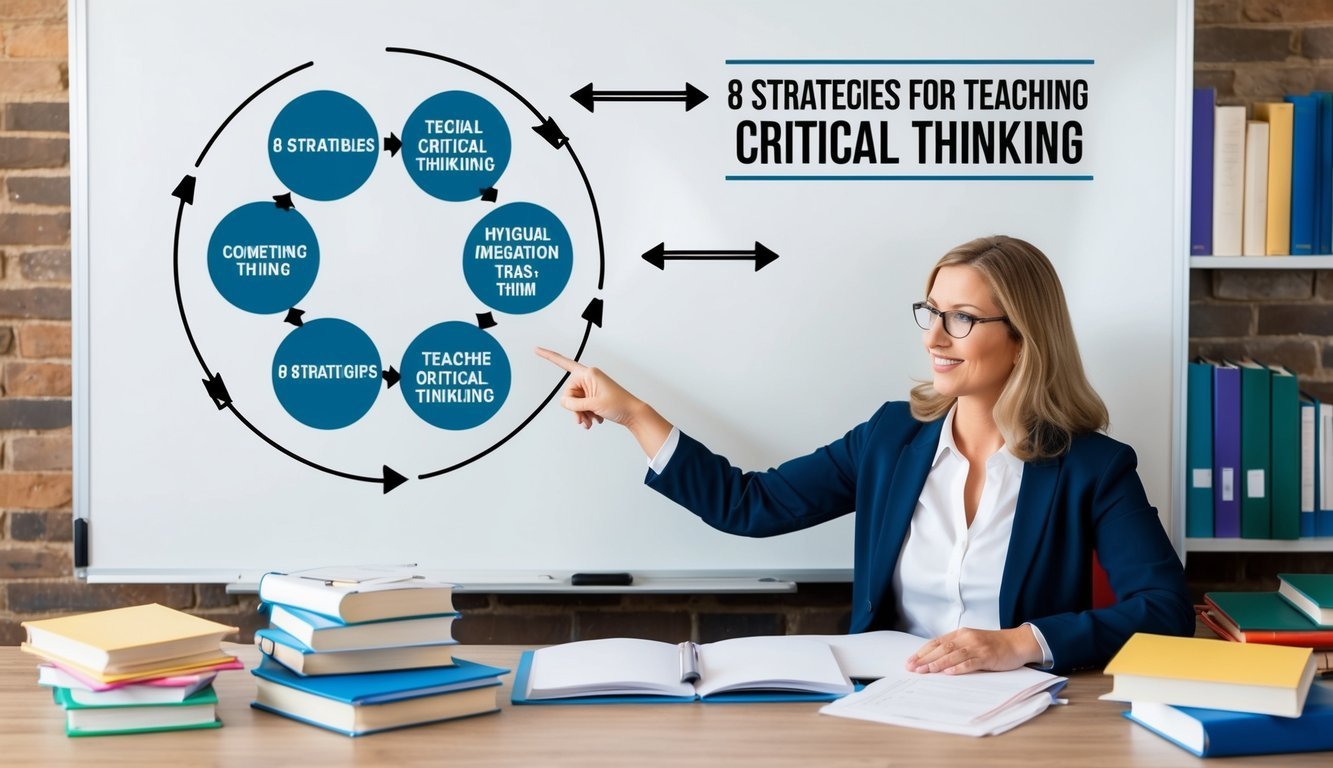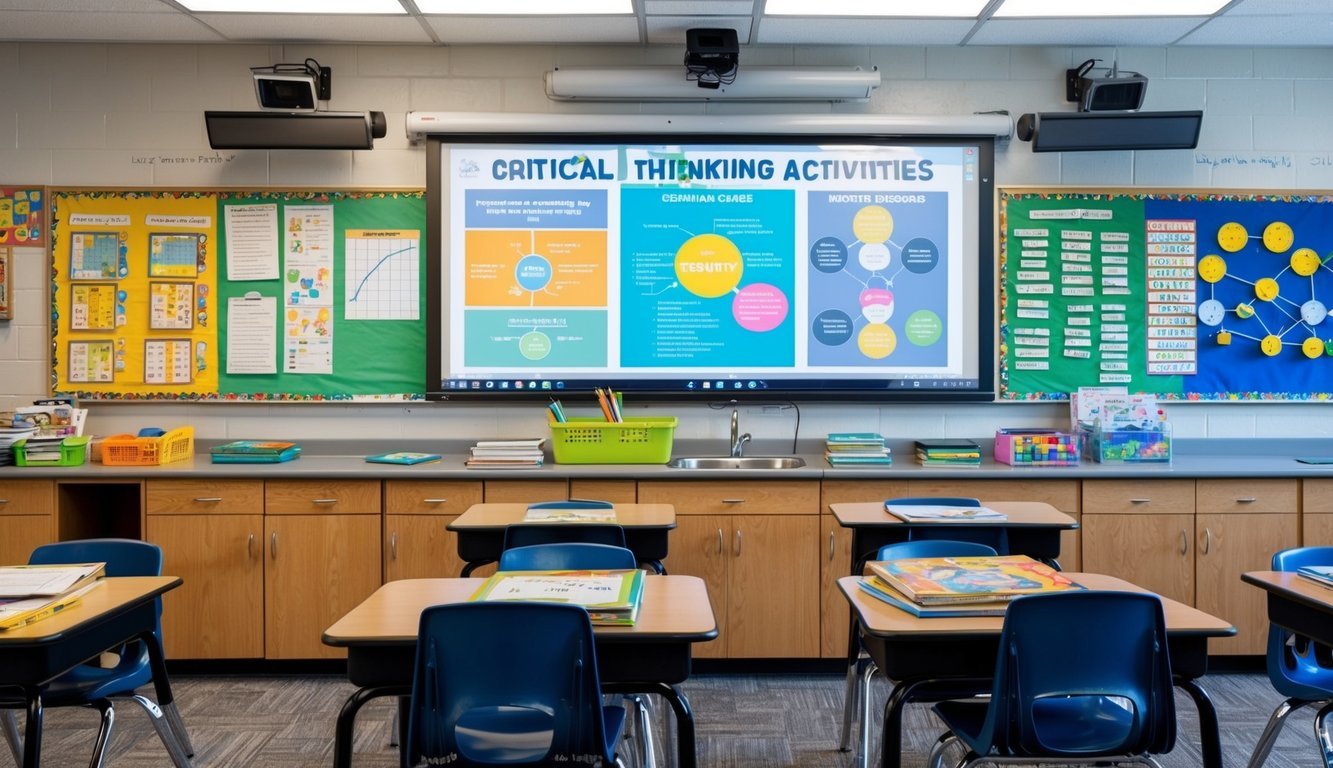PsychNewsDaily Publishers
100 Summit Drive
Burlington, MA, 01803
Telephone: (320) 349-2484
PsychNewsDaily Publishers
100 Summit Drive
Burlington, MA, 01803
Telephone: (320) 349-2484
Teaching critical thinking skills is vital for students, enhancing their ability to analyze information, solve problems, and make informed decisions in real-life situations.

Teaching critical thinking skills is essential in today’s world. These skills help students analyze information, solve problems, and make informed decisions. By fostering critical thinking, educators can prepare students for real-life challenges and encourage them to become lifelong learners.
There are effective strategies that teachers can use to enhance these skills in their classrooms. Exploring various methods not only engages students but also encourages them to view problems from different angles. This approach can lead to deeper understanding and improved academic performance.
Asking provocative questions can spark curiosity in students. These questions encourage them to think deeply about a topic. They should be open-ended to inspire discussion.
Teachers can start with questions that challenge assumptions. For example, asking “What would happen if?” can lead to interesting conversations. Silence after a question can also help students reflect.
Encouraging students to express their thoughts builds critical thinking. When students feel comfortable sharing, they explore different viewpoints. This creates a vibrant classroom environment.
An example of a provocative question is, “Why do you think this tool is important?” Such questions help students connect concepts to real life. Teachers can guide discussions based on students’ responses.
Creating a habit of asking these questions can transform learning. It helps students become more engaged and thoughtful in their studies. By practicing this strategy, students learn to think critically and creatively.
Project-Based Learning (PBL) is a great way to teach critical thinking. This method involves students working on real-world projects. They explore problems that matter to them.
In PBL, students must think creatively to solve issues. They learn to ask questions and seek answers through research and collaboration. Teamwork is essential, as students often work in groups.
Using the right tools can enhance the learning experience. Technology can help students access information and present their findings. This makes projects more engaging and relevant.
Teachers can guide students through the process. It’s important for everyone to understand the goals and tasks involved. Clear instructions help keep students focused and motivated.
When students connect learning to their lives, they are more invested. This sense of ownership can boost their critical thinking skills. Through PBL, students become active learners, ready to face real-life challenges.
Encouraging diverse perspectives helps students think critically. It exposes them to different ideas and viewpoints. This can lead to deeper understanding and discussion.
Teachers can invite guest speakers from various backgrounds. These speakers can share their experiences and insights. This interaction can spark interest and questions among students.
Using documentaries from different cultures is another effective method. These films can show real-world issues from multiple angles. Students can analyze the information and discuss it in groups.
Debates on current events or social issues can also be beneficial. Engaging in discussions allows students to express their thoughts. They learn to respect and consider others’ views while defending their own.
Combining these strategies creates a vibrant learning environment. It helps students develop their critical thinking skills. Embracing diversity in ideas prepares them for the world outside of school.
Problem-solving activities help students practice critical thinking. These activities encourage them to think deeply and use their knowledge in practical ways.
Teachers can create real-life problems for students to solve. This helps students see how their skills apply outside of the classroom.
Using open-ended questions during these activities can spark discussion. This allows students to share their ideas and consider different viewpoints.
Collaborative learning is another great approach. When students work together, they learn from each other. This teamwork can lead to more creative solutions.
By regularly including problem-solving activities, teachers can build a stronger critical thinking base. This prepares students for real-world challenges.
Group discussions are a great way to help students think critically. When they share ideas, they learn from each other. This collaboration encourages deeper understanding of topics.
During discussions, students can ask questions and challenge each other’s viewpoints. This helps them consider different perspectives. They learn to back up their opinions with reasons and evidence.
Teachers can guide these conversations by providing open-ended questions. This keeps the discussion focused and engaging. Students feel more confident sharing their thoughts in a supportive group.
Using various formats, like small groups or whole-class discussions, can also enhance learning. Each format offers different opportunities for participation and thought sharing. This variety keeps discussions fresh and interesting.
Promoting group discussions is an effective way to encourage critical thinking. It allows students to practice speaking and listening skills while exploring new ideas together.
Integrating different points of view helps students see issues from various angles. This practice encourages open-mindedness and fosters better understanding.
Teachers can introduce debates in the classroom. Students can argue for and against a topic, which helps them develop reasoning skills.
Another method is to use diverse texts. Reading materials from different cultures or perspectives broadens their knowledge and enhances critical thinking.
Group discussions can also be useful. Students can share their opinions and listen to others, which promotes respect for differing viewpoints.
Using role-play activities allows students to step into someone else’s shoes. This experience builds empathy and deepens their analytical skills.
Connecting ideas creatively helps students see relationships between different concepts. This skill encourages them to think outside the box and make unique associations.
Teachers can use brainstorming sessions to inspire students. During these sessions, students share thoughts that relate to a central theme. This can lead to interesting discussions and new insights.
Another method is to use visual aids like mind maps. Students can draw connections between various ideas. This visual representation makes it easier to grasp complex concepts.
Group projects also support this strategy. By working together, students learn to combine their ideas. They discover new ways to approach problems and solutions.
Encouraging creative thinking through storytelling is another effective way. Students can create stories that connect different subjects. This process helps them understand how ideas fit together in real life.
Connecting ideas creatively not only enhances critical thinking but also makes learning fun. It opens up pathways for exploration and invites curiosity.
Fostering curiosity is a key way to promote critical thinking in students. When students are curious, they are more likely to ask questions and engage deeply with learning material.
Teachers can encourage curiosity by creating a safe environment where students feel comfortable expressing their thoughts. Valuing questions and exploring ideas together can spark interest and excitement about learning.
Using inquiry-based learning is effective in activating student curiosity. Posing interesting problems or questions allows students to investigate and find solutions on their own.
Noticing when students feel puzzled gives teachers a chance to guide them. Helping students explore their confusion can lead to deeper understanding.
Rewards for curiosity can also motivate students. Recognizing when they ask good questions or show interest encourages them to continue exploring.

Critical thinking is a vital skill that enhances decision-making and problem-solving abilities. It involves analyzing information, evaluating evidence, and forming reasoned conclusions. This section dives into its definition and significance, as well as its essential role in the education system.
Critical thinking is the process of actively analyzing, interpreting, and evaluating information. It allows individuals to distinguish between facts and opinions.
Key elements of critical thinking include:
The importance of critical thinking cannot be overstated. It prepares students for real-life challenges, fostering independence and confidence in their decisions. In a world full of information, critical thinking helps sift through noise. It promotes informed decision-making and encourages individuals to question assumptions.
In education, critical thinking equips students with skills for academic success and lifelong learning. Teachers play a significant role in developing these skills in their students.
Some effective strategies include:
By integrating critical thinking into lessons, educators empower students. This approach helps them navigate complex topics and enhances creativity. When students learn to think critically, they become better learners and problem solvers.

Teaching critical thinking can be tough. Educators face specific barriers that make it difficult for students to engage in deeper thinking. Addressing student resistance is also a key part of helping them improve their skills.
Several challenges can hinder the teaching of critical thinking.
Student Mindset: Some students may not see the value in critical thinking. They often prefer rote memorization and may resist activities that require analytical thought.
Curriculum Constraints: Standardized testing and rigid curricula can focus learning on facts instead of processes. This limits opportunities for students to practice critical thinking skills.
Diverse Thinking Styles: Students have different ways of learning. This means that one method might not work for everyone. Teachers must adapt their strategies to meet various needs.
Assessment Difficulties: Creating assessments that measure critical thinking can be challenging. It’s not always easy to judge a student’s ability to analyze and evaluate information accurately.
Technological Distractions: With smartphones and social media, students may struggle to stay focused. These distractions can make it hard to engage in meaningful discussions or deep-thinking activities.
Addressing student resistance is critical for fostering critical thinking skills.
Build Relevance: Teachers can connect lessons to real-world scenarios. When students see how critical thinking applies in their lives, they may become more interested.
Encourage Curiosity: Creating a classroom environment that encourages questions can motivate students. Teachers can promote an atmosphere where inquiry and exploration are valued.
Use Collaborative Learning: Group activities can help students learn from one another. When they discuss and debate ideas, it can spark interest and allow them to practice critical thinking together.
Provide Support: Offering guidance and constructive feedback helps students feel safe to express their thoughts. Building confidence can reduce their resistance to participating in critical thinking exercises.

This section addresses common questions about teaching critical thinking skills. These inquiries cover methods for adult learners, effective techniques for students, practical classroom examples, workplace strategies, curriculum development, and assessment approaches.
To boost critical thinking in adults, facilitators can use discussions that challenge assumptions. Encouraging real-world problem solving helps connect learning to their experiences. Incorporating case studies can also allow learners to apply concepts in a practical context.
Asking provocative questions can stimulate curiosity and analysis. Project-based learning allows students to explore topics deeply and work collaboratively. Using diverse perspectives in discussions encourages students to challenge their viewpoints and think critically about different ideas.
Teachers can use problem-solving activities that require teams to devise solutions to hypothetical scenarios. Incorporating debates on current issues can help students articulate their positions and analyze arguments. Group discussions about readings can encourage students to explore themes and draw connections.
Workplace training can benefit from role-playing scenarios that mirror real-life challenges. Encouraging employees to collaborate on projects can foster diverse viewpoints and enhance problem-solving skills. Providing opportunities for reflection after activities helps employees assess their approach to decision-making.
Educators can start by defining specific critical thinking skills for their courses. They should then integrate activities that promote these skills throughout the curriculum. Regularly revisiting and expanding on these skills helps ensure continuous development in students.
Instructors can use rubrics to evaluate student work and discussions based on critical thinking criteria. Peer assessments can foster dialogue about thought processes and conclusions. Reflective journals allow students to track their own growth in critical thinking skills.